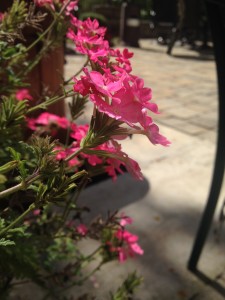Family Identification:
1a.)A Member of the Poaceae family with an explanation of the characters used to determine that family.
Indian grass (Sorghastrum spp.). This family is identified based on the entire leaf margins with parallel venation. These characteristics along with a sheathing leaf, a caryopsis fruit type, and hollow stem are characteristics of this family.
Found outside of Aronoff Laboratory in Columbus, Ohio.
1b.) A member of the Asteraceae family with an explanations of the characters used to determine that family.
Black-eyed Susan (Rudbeckia hirta). This family can be identified because many flowers are in a head that appear to create one larger flower.
This Black-eyed Susan was found at Battelle-Darby Creek Park in Galloway, Ohio.

Black-eyed Susan
Sight Identification:
2a.) Queen Anne’s Lace (Daucus carota). Is easily identified by the small white flowers in an umbel formation that is typically 2-3feet tall. The plant is also known as a wild carrot.
This Queen Anne’s lace was found at Battelle-Darby Creek Park in Galloway, Ohio.
2b.) Sugar Maple (Acer saccharinum). Is easily identified because of its palmate venation and leaves with 5 lobes. In the fall, the coloration of the leaves are brilliant shades of red, orange and yellow.
This Sugar Maple is located outside of the Ohio Union in Columbus, Ohio.
Character Items:
3a.) A plant with simple, alternate, serrate leaves.
American Hornbeam (Carpinus caroliniana). Is a tree that displays leaves that are simple, alternate and serrated. Simple leave are leaves that have a bud located near a single leaf stem. Alternate leaves are leaves that are arranged on varying sides of a branch (ie. they are not located across from one another, but staggered down the branch). Serrate leaves indicate leaves that have “teeth” or edges present.
This American Hornbeam was found outside of Aronoff Lab in Columbus, Ohio.
3b.) A plant with simple, opposite, and entire leaves.
Dogwood (Cornus spp.). Is a plant with simple, opposite and entire leaves. Simple leaves are leaves that have a bud located near a single leaf stem. Opposite leaf arrangement is when the leaves are located directly across from one another on a branch. Entire leaves are leaves that have smooth, whole edges.
This tree was found outside of Aronoff Lab in Columbus, Ohio.







